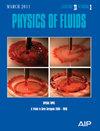封闭孔隙对气体输送的影响及其对优化排水钻孔设计的意义
IF 4.1
2区 工程技术
Q1 MECHANICS
引用次数: 0
摘要
采矿扰动会使封闭的孔隙破裂,释放出瓦斯,并可能引发瓦斯事故。通过钻孔预排瓦斯是防止煤与瓦斯突出的主要措施。然而,封闭孔隙对瓦斯迁移的影响仍不明确,导致钻孔间距和半径不理想。因此,我们建立了一个包含封闭孔隙的气固耦合模型,以研究瓦斯抽放(GD)过程中封闭孔隙对瓦斯迁移的影响。随后,采用响应面方法研究了输入参数及其对残余气体含量(RGC)和预排水时间(PDT)的相互作用。最后,介绍了钻孔间距/半径的优化方法。结果表明,RGC 和 PDT 与封闭孔隙度与总孔隙度之比(λ)和封闭孔隙扩散系数与开放孔隙扩散系数之比(Do/Dc)呈正相关。初期,总产气量主要来自裂缝和开放孔隙,后期则来自封闭孔隙。单因素分析表明,与井眼间距和井眼半径相比,λ、渗透率和 Do/Dc 对 RGC 和 PDT 的影响更大。与井眼半径相比,井眼间距与 λ、渗透率和 Do/Dc 的相互作用更为强烈。在 PDT、RGC 和钻孔数量的约束下,利用响应面优化图提出了钻孔间距和钻孔半径的优化方法。该方法为钻孔施工提供了指导,以优化 GD 效率并尽量减少 RGC。本文章由计算机程序翻译,如有差异,请以英文原文为准。
Impact of closed pores on gas transport and its implication for optimizing drainage borehole design
Mining disturbances can rupture the closed pores, releasing the gas and potentially triggering gas accidents. The pre-drainage of gas via boreholes is the primary measure for preventing coal and gas outbursts. Nevertheless, the influence of closed pores on gas migration remains unclear, leading to suboptimal borehole spacing and radius. Therefore, a gas–solid coupled model incorporating closed pores was developed to investigate the influence of closed pores on gas migration during gas drainage (GD). Subsequently, response surface methodology was employed to investigate the input parameters and their interactions on residual gas content (RGC) and pre-drainage time (PDT). Finally, an optimization methodology for borehole spacing/radius was presented. The results show that both RGC and PDT exhibit a positive correlation with the ratio of closed porosity to total porosity (λ) and the ratio of closed pore diffusion coefficient to that of the open pore (Do/Dc). Initially, the total gas production is primarily extracted from fractures and open pores, followed by closed pores in the later stages. Single-factor analysis demonstrates that λ, permeability, and Do/Dc have a more significant impact on RGC and PDT compared to borehole spacing and borehole radius. Borehole spacing interacts more strongly with λ, permeability and Do/Dc than borehole radius. An optimization method for borehole spacing and borehole radius, constrained by PDT, RGC, and the number of boreholes, is proposed using response surface optimization maps. This method provides guidance for borehole construction to optimize GD efficiency and minimize RGC.
求助全文
通过发布文献求助,成功后即可免费获取论文全文。
去求助
来源期刊

Physics of Fluids
物理-力学
CiteScore
6.50
自引率
41.30%
发文量
2063
审稿时长
2.6 months
期刊介绍:
Physics of Fluids (PoF) is a preeminent journal devoted to publishing original theoretical, computational, and experimental contributions to the understanding of the dynamics of gases, liquids, and complex or multiphase fluids. Topics published in PoF are diverse and reflect the most important subjects in fluid dynamics, including, but not limited to:
-Acoustics
-Aerospace and aeronautical flow
-Astrophysical flow
-Biofluid mechanics
-Cavitation and cavitating flows
-Combustion flows
-Complex fluids
-Compressible flow
-Computational fluid dynamics
-Contact lines
-Continuum mechanics
-Convection
-Cryogenic flow
-Droplets
-Electrical and magnetic effects in fluid flow
-Foam, bubble, and film mechanics
-Flow control
-Flow instability and transition
-Flow orientation and anisotropy
-Flows with other transport phenomena
-Flows with complex boundary conditions
-Flow visualization
-Fluid mechanics
-Fluid physical properties
-Fluid–structure interactions
-Free surface flows
-Geophysical flow
-Interfacial flow
-Knudsen flow
-Laminar flow
-Liquid crystals
-Mathematics of fluids
-Micro- and nanofluid mechanics
-Mixing
-Molecular theory
-Nanofluidics
-Particulate, multiphase, and granular flow
-Processing flows
-Relativistic fluid mechanics
-Rotating flows
-Shock wave phenomena
-Soft matter
-Stratified flows
-Supercritical fluids
-Superfluidity
-Thermodynamics of flow systems
-Transonic flow
-Turbulent flow
-Viscous and non-Newtonian flow
-Viscoelasticity
-Vortex dynamics
-Waves
 求助内容:
求助内容: 应助结果提醒方式:
应助结果提醒方式:


